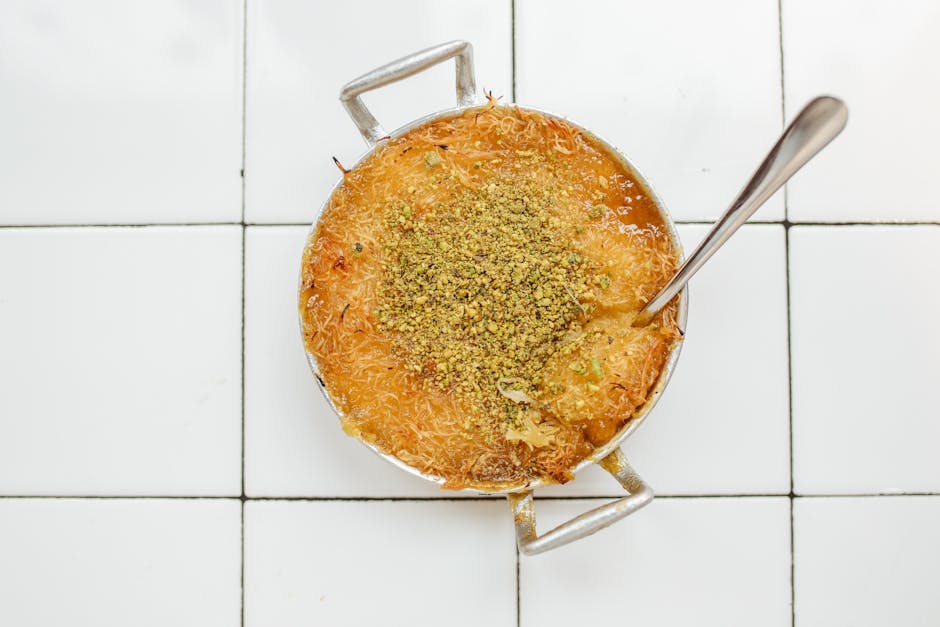
Swedish cuisine, with its rich history and blend of flavors, has always been a tantalizing aspect of Scandinavian culture. As we step into 2025, there’s an exciting revival of traditional Swedish recipes that are stealing the limelight on the global culinary stage. For international food enthusiasts, especially from the United States and Europe, delving into these revitalized dishes offers an authentic taste of Sweden. Let’s embark on a flavorful journey through Sweden’s iconic recipes, reimagined for the modern palate.
The Allure of Swedish Cuisine
Sweden’s culinary landscape is an intriguing mix of rustic traditions and innovative modernism. From the lush forests teeming with berries to the pristine waters abundant with seafood, Sweden offers a bounty of natural ingredients. The cultural emphasis on sustainability and seasonal produce further enriches the Swedish dining experience, making it both environmentally conscious and delectable.
Köttbullar: The Quintessential Swedish Meatballs
No discussion of Swedish cuisine would be complete without mentioning köttbullar. Traditionally served with lingonberry jam and creamy potatoes, these meatballs are a comforting staple in Swedish homes. In 2025, chefs are breathing new life into this classic dish by experimenting with different meats such as venison or plant-based alternatives, catering to diverse dietary preferences without compromising on taste.
Gravlax: A Slice of Nordic Heaven
Gravlax, a delightfully cured salmon dish, is a testament to Sweden’s expertise in preserving fish. This timeless recipe involves curing salmon with a blend of salt, sugar, and dill, resulting in a fresh and flavorful delicacy. As part of the 2025 culinary revival, innovative chefs are introducing unique twists by incorporating zestier elements like citrus peels and smoked salts, enhancing the traditional recipe without overshadowing its essence.
Surströmming: The Fermented Herring
For the adventurous, surströmming offers a bold foray into Swedish flavors. Known for its potent aroma, this fermented herring is typically enjoyed outdoors with flatbread and potatoes. While it remains an acquired taste, 2025 sees an increasing interest in fermentation, encouraging foodies to embrace this distinctive Swedish experience with open minds and daring palates.
Reimagined Swedish Desserts
Prinsesstårta: A Royal Treat
The prinsesstårta, or princess cake, is a beloved Swedish dessert known for its layers of sponge cake, pastry cream, and marzipan. Adorned with a vibrant green hue and a pink marzipan rose, it’s a feast for both the eyes and the taste buds. In recent years, bakers have been experimenting with new flavors like lavender and elderflower, infusing this classic dessert with a fresh twist that resonates with contemporary tastes.
Kanelbullar: Cinnamon Buns with a Twist
Kanelbullar, Sweden’s answer to the cinnamon roll, is a staple in Swedish cafes. These aromatic buns sprinkled with pearl sugar have seen a modern twist in 2025, with bakers incorporating ingredients like cardamom, saffron, and even innovative fillings such as nut butters and fruit compotes, offering a delightful variety while keeping the comforting essence intact.
The Rise of Plant-Based Alternatives
As the world gravitates towards sustainable and health-conscious eating, Sweden is leading with plant-based interpretations of its cherished traditional recipes. From vegan meatballs to dairy-free gravlax, the emphasis is on maintaining the authentic taste while embracing a greener lifestyle. This shift not only caters to vegan and vegetarian audiences but also introduces these classic flavors to a broader global audience.
Exploring Regional Variations
Sweden’s diverse regions each contribute their own unique elements to the country’s culinary tapestry. In 2025, there is a renewed interest in regional specialties that offer distinct perspectives on traditional dishes.
Dalarna’s Rårakor
Originating from Dalarna, rårakor are crispy potato pancakes often served with lingonberry sauce and pork. This regional favorite is gaining popularity globally as chefs experiment with toppings like smoked salmon or vegan alternatives, turning it into a versatile dish suitable for any meal of the day.
Gotland’s Saffranspannkaka
The island of Gotland offers saffranspannkaka, a luxurious saffron pancake that is both rich and aromatic. Traditionally served with whipped cream and berries, this dessert is often reserved for special occasions. In 2025, innovative chefs are introducing pairings such as citrus preserves or nut-based creams, providing a contemporary twist that complements the dish’s traditional charm.
Swedish Culinary Techniques
The culinary techniques employed in Swedish cooking are as much a part of the experience as the ingredients themselves. In 2025, there is a resurgence of interest in these methods, as they provide both an authentic and immersive cooking experience.
Curing and Smoking
Swedes have long mastered the art of curing and smoking, a method that preserves and enhances the delicate flavors of meats and fish. This technique is seeing a revival, not just in traditional recipes like gravlax and smoked reindeer, but in innovative dishes that combine international flavors with Swedish sensibilities.
Fermentation
Fermentation, a cornerstone of Swedish cuisine, has garnered global attention due to its health benefits and flavorful results. Swedish chefs are pioneering new ways to incorporate fermented foods into their recipes, using traditional methods to create contemporary dishes that appeal to health-conscious gourmets.
The Importance of Sustainability
In 2025, sustainability is not just a trend but a fundamental aspect of Swedish cooking. The emphasis on local, seasonal produce and environmentally friendly practices is inspiring chefs worldwide to adopt similar philosophies.
Embracing Foraged Ingredients
Foraging plays a critical role in Swedish culinary traditions, with chefs and home cooks alike utilizing seasonal produce like berries, mushrooms, and herbs. This practice not only adds depth to the dishes but also supports biodiversity and sustainable consumption.
Reducing Food Waste
Sweden is at the forefront of the global movement to reduce food waste. In the kitchens of 2025, there’s a significant push towards using every part of an ingredient, from root to stem, inspiring chefs and home cooks to think creatively and responsibly about their culinary practices.
Swedish Food in Global Cuisine
As Swedish flavors continue to gain international acclaim, they’re influencing cuisines worldwide, leading to exciting new fusion dishes.
Swedish Tacos
Inspired by global culinary influences, Swedish tacos are a delightful fusion that combines traditional ingredients like pickled herring and lingonberries with taco shells. This playful dish is just one example of how Swedish cuisine adapts and evolves with global culinary trends, offering a fresh take on classic flavors.
Nordic Sushi
Blending Japanese techniques with Nordic ingredients, Nordic sushi features elements such as cured salmon, pickled vegetables, and unconventional grains. This innovative fusion highlights how Swedish cuisine continues to expand its reach, capturing the imagination of food lovers worldwide.
FAQ
What is the most popular Swedish dish globally?
Köttbullar, or Swedish meatballs, are arguably the most recognized Swedish dish worldwide, known for their comforting flavors and hearty accompaniments like lingonberry jam and creamy potatoes.
Are there vegetarian versions of traditional Swedish dishes?
Yes, many traditional dishes now have vegetarian and vegan alternatives, including plant-based meatballs and dairy-free gravlax, reflecting the growing global trend towards plant-based diets.
What are some must-try Swedish desserts?
Prinsesstårta and kanelbullar are quintessential Swedish desserts. Their rich flavors and unique textures make them a delightful experience for anyone exploring Swedish cuisine.
How is Swedish cuisine adapting to modern sustainability trends?
Swedish cuisine is embracing sustainability by focusing on local, seasonal ingredients, reducing food waste, and incorporating foraged produce, aligning with global movements towards environmentally conscious eating.
What makes Swedish food unique?
Swedish cuisine is unique due to its combination of simple yet flavorful ingredients, traditional techniques like curing and fermentation, and a strong emphasis on sustainability, offering a taste that is both authentic and innovative.
Conclusion
Savoring Swedish flavors in 2025 invites food enthusiasts to explore a cuisine rich in history yet dynamic in its modern reinterpretations. Whether it’s the comforting taste of meatballs or the adventurous bite of surströmming, Swedish food offers a diverse palette that appeals to global audiences. As traditional recipes are revived with innovative twists, the Swedish culinary experience continues to thrive, offering both nostalgia and novelty to those willing to explore its depths. Embrace the flavors, embrace the journey, and discover the timeless allure of Swedish cuisine.


